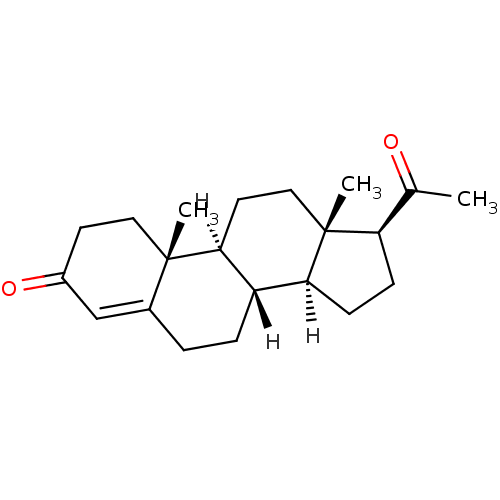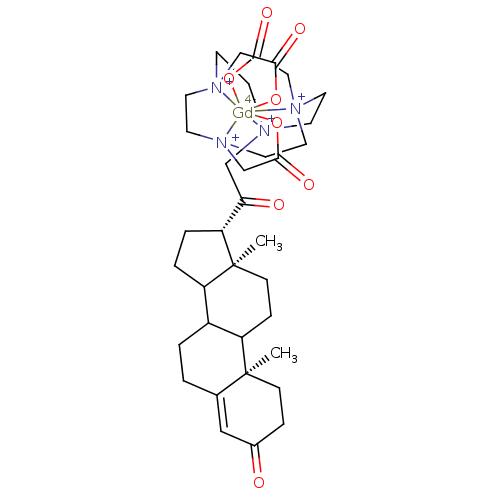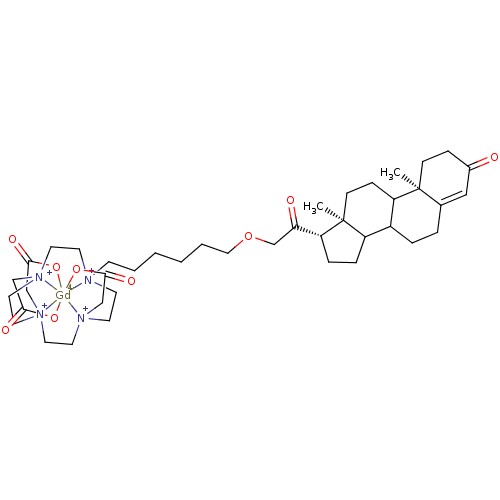Affinity DataIC50: 1.60nMT: 2°CAssay Description:Competitive binding assay were performed using increasing dose of the contrast agents and fluorescently labeled progesterone as the competitor. More data for this Ligand-Target Pair
Affinity DataIC50: 22nMT: 2°CAssay Description:Competitive binding assay were performed using increasing dose of the contrast agents and fluorescently labeled progesterone as the competitor. More data for this Ligand-Target Pair
Affinity DataIC50: 96nMT: 2°CAssay Description:Competitive binding assay were performed using increasing dose of the contrast agents and fluorescently labeled progesterone as the competitor. More data for this Ligand-Target Pair
Affinity DataIC50: 460nMT: 2°CAssay Description:Competitive binding assay were performed using increasing dose of the contrast agents and fluorescently labeled progesterone as the competitor. More data for this Ligand-Target Pair
Affinity DataIC50: 860nMT: 2°CAssay Description:Competitive binding assay were performed using increasing dose of the contrast agents and fluorescently labeled progesterone as the competitor. More data for this Ligand-Target Pair





